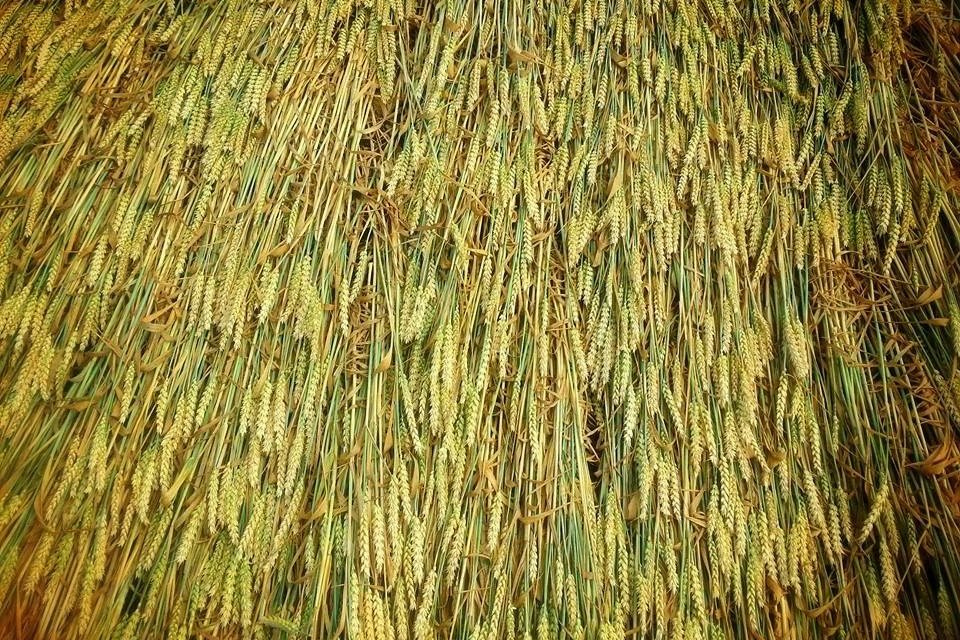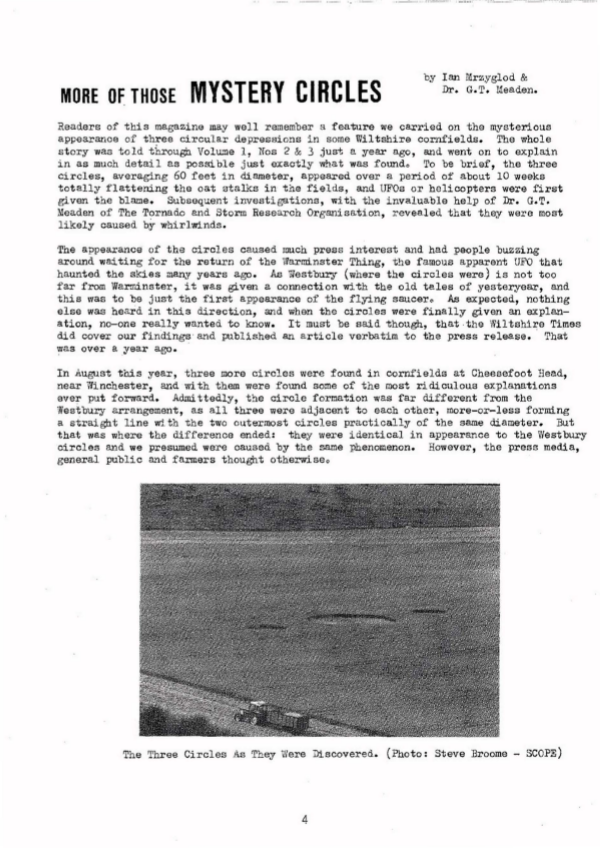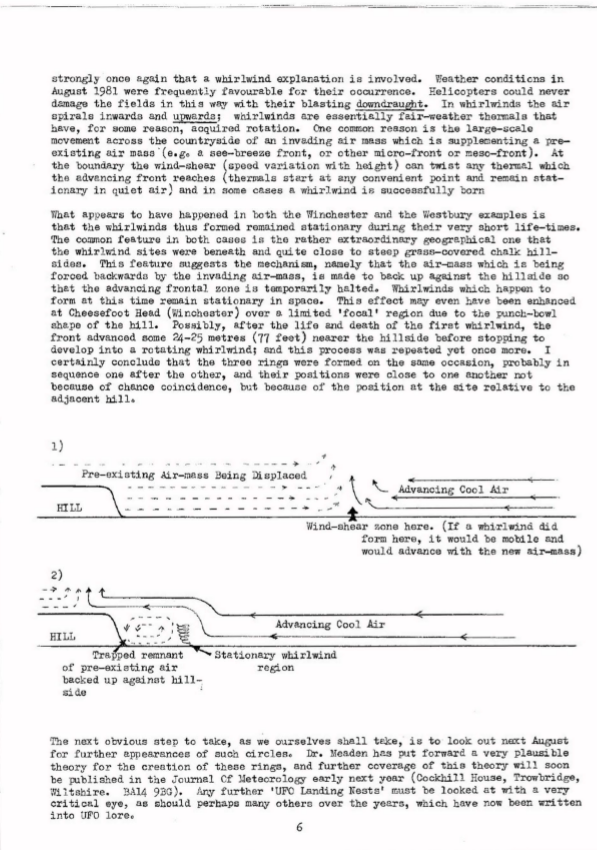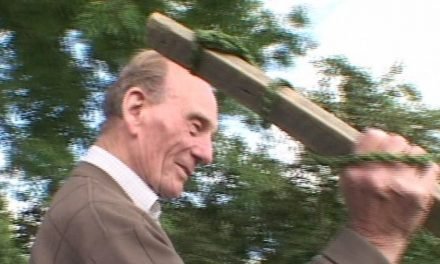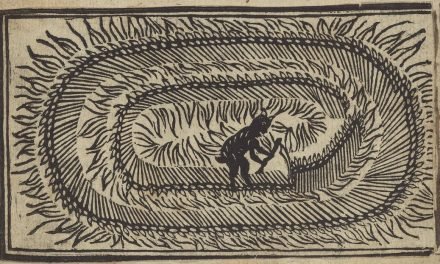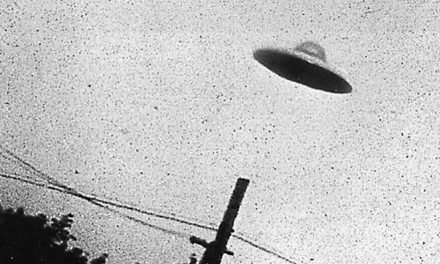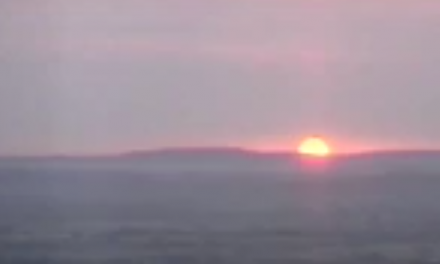Ufology became aware of the crop circle phenomenon through the content of an article in Flying Saucer Review’s March 1982 edition. It was written by Pat Delgado, later to become one of the world’s best known cerealogists, and detailed his examination of three circles at Cheesefoot Head, Hampshire, in the summer of 1981.
Scans accompanying the article appear directly below. They feature photographs and illustrations referred to in the text.
CHEESEFOOT HEAD MYSTERY RINGS
Pat Delgado
It was on Wednesday, August 19th, 1981, that I first heard about the discovery of mysterious flattened rings in a cornfield at the beauty spot of Cheesefoot Head “punch bowl”, which is near Winchester in Hampshire. I was at Arlesford Golf Club with some friends when two other golfers, well-known to us, asked if we could explain the phenomenon which they had seen a couple of days earlier. Needless to say there was a variety of suggestions as to how the three rings came to be there, ranging from practical jokers, and school children, and rutting deer, to whirlwinds.
As the site of the rings lies only a few miles from my home, I went to see them for myself on Saturday, August 22nd. The road runs close to, and well above the cornfield, and there were the rings in full view. The cornfield, golden brown, presented a completely smooth top surface broken only by the sharply-defined circles.
I had taken my ten magnification binoculars with me, so I was able to examine the area in some detail. The edges of the rings were sharp, consisting of a circle of erect stalks inside which the immediate stalks constituting the floor were flattened in a clockwise direction. To get a similar effect one would have to drive a stake into the ground, and pivot on the stake a heavy pole, pulling it round to “iron out” a flattened circle.
I was unable to detect, even through the binoculars, any pathway, or track, from the perimeter of the field to any of the three rings, viewed from positions at ninety degree locations. It appeared that the rings could only have been made by something descending on to the field. The centres of the rings lined up exactly.
The size of the largest ring may be judged from the photographs, for it was ascertained, at the edge of the field, that the wheat was just over two feet high. The height of the plants goes into the diameter of the largest ring about twenty-six times, so the diameter was at least fifty two feet. Measured in the same manner, the diameter of each smaller ring was found to be about seventeen feet.
Some faint tractor wheel tracks were discernible across the field, obviously from fertiliser or pesticide spraying carried out much earlier in the year. The corn growing in the tracks was erect, but slightly shorter than that on either side. Being an artist as well as an engineer, I drew a crayon sketch of the scene, and this matches with the newspaper photograph, but with much more surrounding detail.
On Monday afternoon, August 24th, I telephoned BBC TV Southampton, and told the news editor about the rings. He was interested enough to ask me to write a letter to him about the affair. So I rang ITV Southampton, and the news editor there was extremely interested. Indeed, she arranged for a camera crew to go to the site right away, and an item about the rings was featured in their Day by Day programme on Tuesday August 25th.
Alerted by the ITV programme the local newspapers got in on the story. The Hampshire Chronicle, on August 28th, published a photograph of the site, gave details, and mentioned that UFO enthusiasts were visiting the site, and that sceptics said the answer was simple — “youngsters at work, deliberately setting out to create a ‘flying saucer’ scare.” What the paper failed to say was how child vandals got to the site without leaving any marks of their passage through the cornfield. According to the Southern Evening Echo, there was a more sophisticated, albeit noisier, explanation: a Royal Air Force Chinook twin-rotor helicopter — a type based at Odiham, Hants. What wasn’t stated was how the twin rotor helicopter made three holes in the crop, all near and tidy. One gathers from the Echo article that the owner of another damaged crop was Mr. G. Rowsell, and that he had claimed compensation from the Ministry of Defence, who said they were studying his claim. Meanwhile Mr. Rowsell had dismissed, as “…a load of tripe,” a claim by the chairman of the British UFO Society that the circles at Cheesefoot Head were caused by UFOs. On September 10th came the RAF disavowal, as reported in the Winchester Extra. “Highly unlikely” said the spokesman, adding that the pilots were under strict instructions not to fly or hover low over cornfields in the summer. “Aircraft” he said “would only land if in trouble … and they wouldn’t make such a tidy job.”
So what are we left with? The UFO society’s load of tripe?
It is worth noting that the field had been harvested by the evening of August 31st. The floors of the rings were still visible, although partly covered by heaped rows of cut stalks. The floors of all three circles had the corn flattened in the same clockwise direction. There were no interconnecting tracks between circles. The accompanying photographs are prints made from colour transparencies taken by Mr. Kit Nielson of the Alton Herald. Note the quadrants of reflected light in the circles, due to all the stalks lying in a clockwise direction (similar to the effect that can be obtained from gramophone record grooves).
On the map I have located the positions of three sites that recently acquired mystery rings in the corn. No. 1 is the position of the Cheesefoot Head rings. No. 2 marks the approximate site of three reported similar rings at Three Maids Hill near Worthy Down to the north west of Winchester. No. 3 is the approximate position of rings recently reported in the local Andover newspaper. It will be observed that the three points lie in a straight line. It should also be noted that position 4, quite close to the line, is the site of Mrs. Bowles’ famous [UFO] encounter in 1975.
From a contemporary perspective it’s interesting to see Delgado’s report not mentioning crop circles. This is, of course, because the term had yet to be invented. Instead, Delgado writes of ‘mystery rings’.
The article prompted a small number of responses to Flying Saucer Review. The most noteworthy of these came from Ian Mrzyglod in the June 1982 publication:
Mrzyglod is best known in the croppie realm for being one of the very first circles investigators. As a member of the PROBE UFO group he visited one of the circles found under the Salisbury Plain escarpment near Westbury, Wiltshire, in 1980. As part of his investigation, Mrzyglod consulted with Dr Terence Meaden, an amateur meteorologist. That Meaden had some influence upon the UFO investigator is clear; he is referred to in the correspondence.
The June 1982 letter followed slowly after Meaden and Mrzyglod had produced a piece entitled ‘More Mystery Circles’ for the December 1981 edition of PROBE’s in-house journal, the Probe Report. It is reproduced below.
So, not only do the Cheesefoot Head circles mark the arrival of the modern phenomenon to a wider audience, they also introduce a divide between researchers as to their origins. On one side is Delgado and his thinly veiled posturing towards a paranormal cause, on the other is Meaden and his meteorological theorising.

